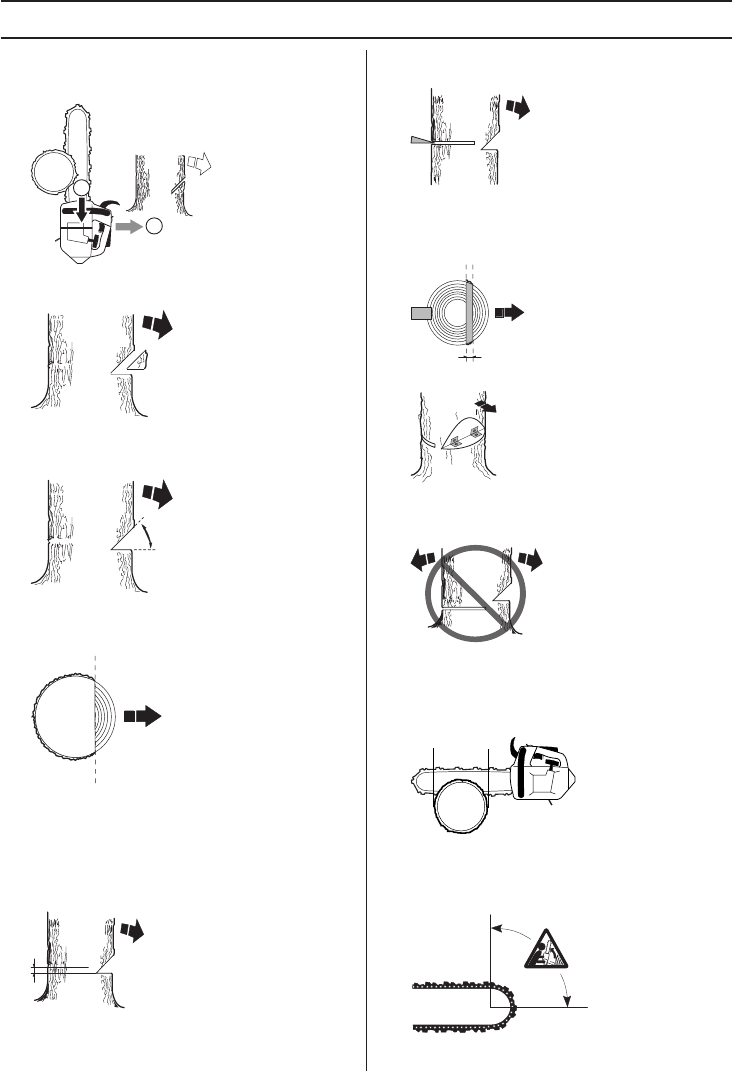
WORKING TECHNIQUES
30 – English
direction (2). Try to maintain your position in the tree on
the right side and cut on the pull stroke. Ensure that you
can see the bar during the whole part of your operation.
Next make the bottom cut so that it finishes exactly at the
end of the top cut.
The directional cuts should run 1/4 of the diameter
through the trunk and the angle between the top cut and
bottom cut should be 60
° - 70°.
The line where the two cuts meet is called the directional
cut line. This line should be perfectly horizontal and at
right angles (90
°) to the chosen felling direction.
Felling cut
The felling cut is made from the opposite side of the tree
and it must be perfectly horizontal. Try to take a correct
position so you are able to cut on the pull stroke.
Make the felling cut about 0-1.5 inches (0-3 cm) above the
bottom directional cut.
Use full throttle and bring the bar and chain slowly into the
tree. Make sure the tree does not start to move in the
opposite direction to your intended felling direction. Drive
a wedge or breaking bar into the cut as soon as it is deep
enough.
Finish the felling cut parallel with the directional cut line so
that the distance between them is at least 1/10 of the
trunk diameter. The uncut section of the trunk is called the
felling hinge.
The felling hinge controls the direction that the tree falls in.
All control over the felling direction is lost if the felling
hinge is too narrow or non-existent, or if the directional
cuts and felling cut are badly placed.
We recommend that you use a bar that is longer than the
diameter of the tree, so that you can make the felling cut
and directional cuts with single cutting strokes. See the
Technical data section to find out which lengths of bar are
recommended for your saw.
There are methods for felling trees with a diameter larger
than the bar length. However these methods involve a
much greater risk that the kickback zone of the bar will
come into contact with the tree.
2
1


















